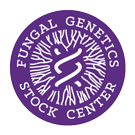Strain: Neurospora crassa
FGSC #9007
Reporting Genes: cpc-2 cpc-3 cyh-2
Species: crassa
Alternate Strain Number: SA10-4
Depositor: MS
Mating Type: A
Genes

Reporting Genes: cpc-2 cpc-3 cyh-2
Species: crassa
Alternate Strain Number: SA10-4
Depositor: MS
Mating Type: A
